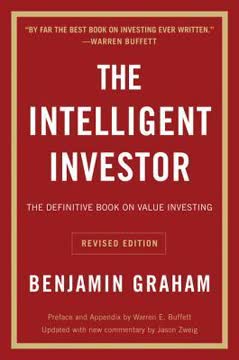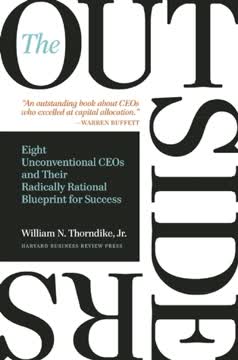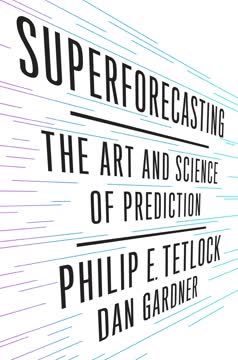Key Takeaways
1. Our minds are not designed for many of today's problems
Smart people make poor decisions because they have the same factory settings on their mental software as the rest of us, and that software isn't designed to cope with many of today's problems.
Cognitive biases affect everyone. Even highly intelligent individuals are susceptible to decision-making errors due to inherent mental shortcuts and biases. These biases, which evolved to help us survive in simpler environments, can lead to poor choices in our complex modern world.
Awareness is key. Recognizing these mental pitfalls is the first step in improving decision-making. Common biases include:
- Overconfidence
- Confirmation bias
- Anchoring effect
- Availability heuristic
Deliberate strategies can help. To combat these biases, we can:
- Seek diverse perspectives
- Consider contrary evidence
- Use structured decision-making frameworks
- Embrace probabilistic thinking
2. The outside view trumps the inside view in decision-making
If you want to know how something is going to turn out for you, look at how it turned out for others in the same situation.
The inside view is intuitive but flawed. When making predictions, we naturally focus on our unique circumstances and plans. This leads to overly optimistic forecasts and a failure to consider potential obstacles.
The outside view provides valuable context. By examining similar situations and outcomes, we can:
- Gain a more realistic perspective
- Identify common pitfalls
- Set more accurate expectations
Practical application: When embarking on a new project or venture:
- Identify a relevant reference class of similar endeavors
- Gather data on their outcomes and timelines
- Use this information to inform your own plans and predictions
- Adjust your expectations based on the typical results in your reference class
3. Tunnel vision leads to poor choices
We generally fail to consider enough alternatives looking forward and think we knew what was going on looking backward.
Limited options limit outcomes. When we fail to consider a sufficient range of alternatives, we risk overlooking better solutions and missing potential pitfalls.
Cognitive biases contribute to tunnel vision:
- Anchoring: Fixating on initial information or ideas
- Confirmation bias: Seeking information that supports existing beliefs
- Availability heuristic: Overemphasizing easily recalled information
Strategies to broaden perspective:
- Actively generate multiple alternatives
- Seek input from diverse sources
- Use structured brainstorming techniques
- Consider the opposite of your initial instinct
- Employ "red team" thinking to challenge assumptions
4. Experts are being squeezed out by technology and crowds
As networks harness the wisdom of crowds and computing power grows, the ability of experts to add value in their predictions is steadily declining.
The expert squeeze is reshaping industries. Traditional expertise is being challenged by:
- Advanced algorithms and machine learning
- Collective intelligence platforms
- Big data analytics
Areas where experts retain an edge:
- Complex, context-dependent problems
- Strategic thinking and creativity
- Human-to-human interactions
Adapting to the new landscape:
- Identify where human expertise adds unique value
- Embrace technology as a complement to human skills
- Develop meta-expertise in integrating multiple information sources
- Focus on skills that are difficult to automate, such as emotional intelligence and complex problem-solving
5. Our situation shapes our decisions more than we realize
Decision making, whether in the medical office, the boardroom, or the courtroom, is an inherently social exercise.
Context is crucial. Our environment, including physical surroundings and social dynamics, significantly influences our choices, often without our awareness.
Key situational factors:
- Social pressure and conformity
- Priming effects from environmental cues
- Default options and choice architecture
- Emotional states and stress levels
Mitigating situational influences:
- Increase awareness of potential situational biases
- Create decision-making environments that support objectivity
- Use structured processes to counteract undue influences
- Seek diverse perspectives to challenge groupthink
- Practice mindfulness to enhance self-awareness in various contexts
6. Complex systems cannot be understood by their individual parts
You cannot understand an ant colony by watching what one ant does.
Emergent behavior defies reductionism. In complex adaptive systems, such as economies, ecosystems, or social networks, the whole behaves differently than the sum of its parts.
Key characteristics of complex systems:
- Non-linear interactions
- Feedback loops
- Adaptive behavior
- Emergence of novel properties
Implications for decision-making:
- Avoid oversimplification of complex problems
- Consider system-wide effects of interventions
- Embrace uncertainty and unpredictability
- Use simulations and modeling to explore scenarios
- Adopt a holistic, systems-thinking approach
7. Phase transitions cause sudden, unexpected changes
Critical points help explain our perpetual surprise at black swan events because we have a hard time understanding how such small incremental perturbations can lead to such large outcomes.
Tipping points defy linear thinking. In many systems, small changes can accumulate until a critical threshold is reached, leading to rapid, large-scale transformations.
Examples of phase transitions:
- Financial market crashes
- Viral content spread
- Ecological shifts
- Social movements
Strategies for dealing with phase transitions:
- Study historical patterns and precursors
- Monitor early warning signals and leading indicators
- Build resilience and adaptability into systems
- Prepare for multiple scenarios, including extreme outcomes
- Embrace antifragility – systems that benefit from volatility
8. Distinguishing skill from luck is crucial for evaluating outcomes
When luck is prominent in shaping outcomes, you should anticipate that reversion to the mean will make it likely that extreme outcomes are followed by more average outcomes.
Misattributing luck as skill leads to poor decisions. In many domains, such as investing, business, and sports, outcomes are influenced by both skill and chance. Failing to recognize this can result in:
- Overconfidence after successes
- Undue criticism after failures
- Misallocation of resources
Key considerations:
- Short-term results are often heavily influenced by luck
- Larger sample sizes are needed to discern skill in luck-dominated fields
- Reversion to the mean is a powerful force in many domains
Strategies for better evaluation:
- Focus on process over outcomes
- Use appropriate time horizons for assessment
- Consider counterfactuals and alternative scenarios
- Employ statistical thinking and probabilistic reasoning
- Seek out reliable, long-term performance metrics
Last updated:
FAQ
What's "Think Twice: Harnessing the Power of Counterintuition" about?
- Overview: "Think Twice" by Michael J. Mauboussin explores how cognitive biases and decision-making errors can lead to poor outcomes, even for intelligent individuals.
- Counterintuition: The book emphasizes the importance of counterintuitive thinking to improve decision-making processes.
- Multidisciplinary Approach: Mauboussin draws from various fields, including psychology, finance, and complex systems theory, to provide insights into better decision-making.
- Practical Application: The book offers practical advice on how to recognize and mitigate common decision-making mistakes.
Why should I read "Think Twice: Harnessing the Power of Counterintuition"?
- Improve Decision-Making: The book provides tools and strategies to enhance your decision-making skills by understanding and overcoming cognitive biases.
- Broad Applicability: Its insights are applicable across various fields, including business, investing, and personal life, making it valuable for a wide audience.
- Engaging Examples: Mauboussin uses real-world examples and case studies to illustrate complex concepts, making them accessible and relatable.
- Actionable Advice: The book offers concrete steps and techniques to apply the concepts in everyday decision-making scenarios.
What are the key takeaways of "Think Twice: Harnessing the Power of Counterintuition"?
- Outside View vs. Inside View: Emphasizes the importance of considering the outside view, which involves looking at similar situations and their outcomes, rather than relying solely on the unique aspects of the current situation.
- Role of Cognitive Biases: Highlights how biases like overconfidence, anchoring, and the illusion of control can lead to poor decisions.
- Complex Systems Understanding: Stresses the need to understand complex systems at the right level, recognizing that the whole is often greater than the sum of its parts.
- Importance of Feedback: Encourages the use of feedback and decision journals to improve decision-making processes over time.
What are the best quotes from "Think Twice: Harnessing the Power of Counterintuition" and what do they mean?
- "Smart people make big, dumb, and consequential mistakes." This quote underscores the book's premise that intelligence alone does not prevent poor decision-making; awareness of cognitive biases is crucial.
- "The main lesson from the inside-outside view is that while decision makers tend to dwell on uniqueness, the best decisions often derive from sameness." It highlights the importance of considering historical data and similar past situations when making decisions.
- "Consequences are more important than probabilities." This emphasizes the need to focus on potential outcomes and their impacts rather than just the likelihood of events occurring.
- "More is different." This phrase captures the essence of complex systems, where the behavior of the whole cannot be understood merely by analyzing its individual parts.
How does Michael J. Mauboussin suggest we improve our decision-making?
- Embrace the Outside View: Mauboussin advises using statistical data and historical precedents to inform decisions, rather than relying solely on the specifics of the current situation.
- Recognize Cognitive Biases: He suggests being aware of common biases like overconfidence and anchoring, and actively working to counteract them.
- Use Feedback and Journals: Keeping a decision-making journal can help track decisions and outcomes, providing valuable feedback for future decisions.
- Consider System Complexity: Understanding the complexity of systems and the interactions within them can lead to better decision-making by recognizing that the whole is often greater than the sum of its parts.
What is the "Outside View" and why is it important in decision-making?
- Definition: The outside view involves looking at a problem by considering similar situations and their outcomes, rather than focusing solely on the unique aspects of the current situation.
- Reduces Overconfidence: By relying on statistical data and historical precedents, the outside view helps mitigate overconfidence and overly optimistic predictions.
- Improves Accuracy: It provides a more objective basis for decision-making, leading to more accurate predictions and better outcomes.
- Counteracts Biases: The outside view helps counteract cognitive biases by grounding decisions in reality rather than subjective perceptions.
What role do cognitive biases play in decision-making according to "Think Twice"?
- Influence on Decisions: Cognitive biases can lead to systematic errors in judgment and decision-making, affecting outcomes negatively.
- Common Biases: The book discusses biases such as overconfidence, anchoring, and the illusion of control, which can distort perception and lead to poor decisions.
- Subconscious Impact: Many biases operate at a subconscious level, making them difficult to recognize and counteract without deliberate effort.
- Mitigation Strategies: Mauboussin offers strategies to identify and mitigate these biases, such as using the outside view and seeking diverse perspectives.
How does "Think Twice" address the concept of complex systems?
- Complex Adaptive Systems: The book explains that complex systems consist of interconnected parts that interact in unpredictable ways, making them difficult to manage.
- Emergent Behavior: It highlights that the behavior of the whole system cannot be understood by analyzing individual components alone.
- System-Level Thinking: Mauboussin emphasizes the importance of understanding systems at the right level to make informed decisions.
- Unintended Consequences: The book warns of unintended consequences that can arise from interventions in complex systems, advocating for cautious and informed decision-making.
What is the significance of feedback in improving decision-making as per "Think Twice"?
- Role of Feedback: Feedback provides valuable information about the effectiveness of decisions, helping to refine and improve future decision-making processes.
- Decision Journals: Keeping a decision-making journal allows individuals to track their decisions and outcomes, providing a record for analysis and learning.
- Timely and Accurate Feedback: The book stresses the importance of receiving timely and accurate feedback to make necessary adjustments and improvements.
- Learning from Mistakes: Feedback helps identify mistakes and areas for improvement, facilitating continuous learning and development in decision-making skills.
How does "Think Twice" suggest we handle the interplay of skill and luck in outcomes?
- Skill vs. Luck: The book emphasizes the need to distinguish between skill and luck in evaluating outcomes, as both play a role in success and failure.
- Reversion to the Mean: It highlights the concept of reversion to the mean, where extreme outcomes are often followed by more average results due to the influence of luck.
- Focus on Process: Mauboussin advises focusing on the decision-making process rather than just outcomes, as this helps identify areas of skill and potential improvement.
- Avoid Overemphasis on Outcomes: The book cautions against overemphasizing outcomes, as they can be misleading due to the role of luck, and instead suggests evaluating the quality of the decision-making process.
What practical steps does "Think Twice" recommend for better decision-making?
- Use of Checklists: The book recommends using checklists to ensure all relevant factors are considered in decision-making, reducing the risk of oversight.
- Premortem Analysis: Conducting a premortem involves imagining a decision has failed and identifying potential reasons for failure, helping to anticipate and mitigate risks.
- Consider Incentives: Understanding the incentives and motivations of all parties involved can provide insights into potential biases and decision-making dynamics.
- Embrace Diversity: Seeking diverse perspectives and opinions can enhance decision-making by providing a broader range of insights and reducing the impact of individual biases.
Review Summary
Think Twice receives mixed reviews, with ratings ranging from 2 to 5 stars. Many readers find it insightful and practical for improving decision-making, praising its well-researched content and accessible writing style. Some appreciate its focus on behavioral biases and cognitive errors. However, critics argue it lacks originality, rehashing ideas from other behavioral finance books. Some find it dry or overly simplistic. Overall, it's recommended for those new to the subject but may be redundant for readers familiar with similar works.
Similar Books










Download PDF
Download EPUB
.epub digital book format is ideal for reading ebooks on phones, tablets, and e-readers.







